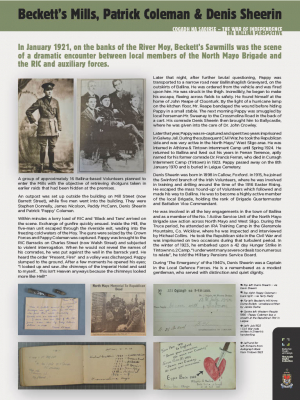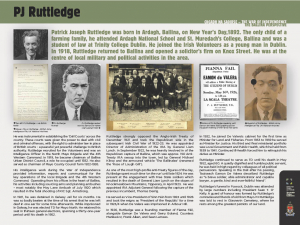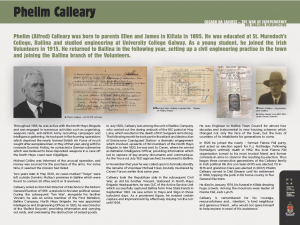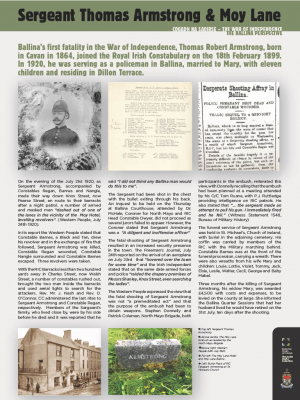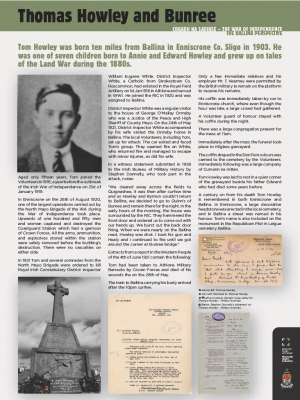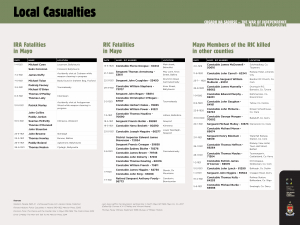The Jackie Clarke Collection | Opening hours: Tuesday to Saturday 10am - 5pm | Free Admission
Our Blog
News and items of interest from the Clarke Collection
Popular Tags
Items filtered by date: August 2021
Denis Sheerin, Pappy Coleman, and Beckett's Mills
PJ Ruttledge
Phelim Calleary
Sergeant Thomas Armstrong and Moy Lane
Thomas Howley and Bunree
National Heritage Week - War of Independence - The Local Story
National Heritage Week, running from August 14th to 22nd, an initiative by the Heritage Council, celebrates all things heritage! In conjunction with this important week on the heritage calendar, the Jackie Clarke Collection is proud to present an exhibition on the Irish War of Independence; Cogadh na Saoirse - The War of Independence - The Ballina Perspective. The panel exhibition will be on display in the Jackie Clarke Collection from next week but for those unable to visit the Collection at this time we will be releasing content from the exhibition all this week online to celebrate National Heritage Week. The exhibition focuses on a selection of some of the local people and incidents that occurred in Ballina and its environs from 1919 to 1921. The project, including extensive research and content writing, was a collaboration between the Jackie Clarke Collection and its Volunteer and Education programmes. We begin the online release of the exhibition with the list of local casualties.

Tours
Specialist tours can be booked in advance by emailing clarkecollection@mayococo.ie or by phoning (096) 73508.
Contact
The Jackie Clarke Collection
Pearse Street, Ballina, Co. Mayo, Ireland
T: + 353 (0)96 73508
W: www.clarkecollection.ie
E: clarkecollection@mayococo.ie
Opening Times
Tuesday to Saturday: 10am to 5pm
Entrance is located at the side of the building on Walsh Street.


